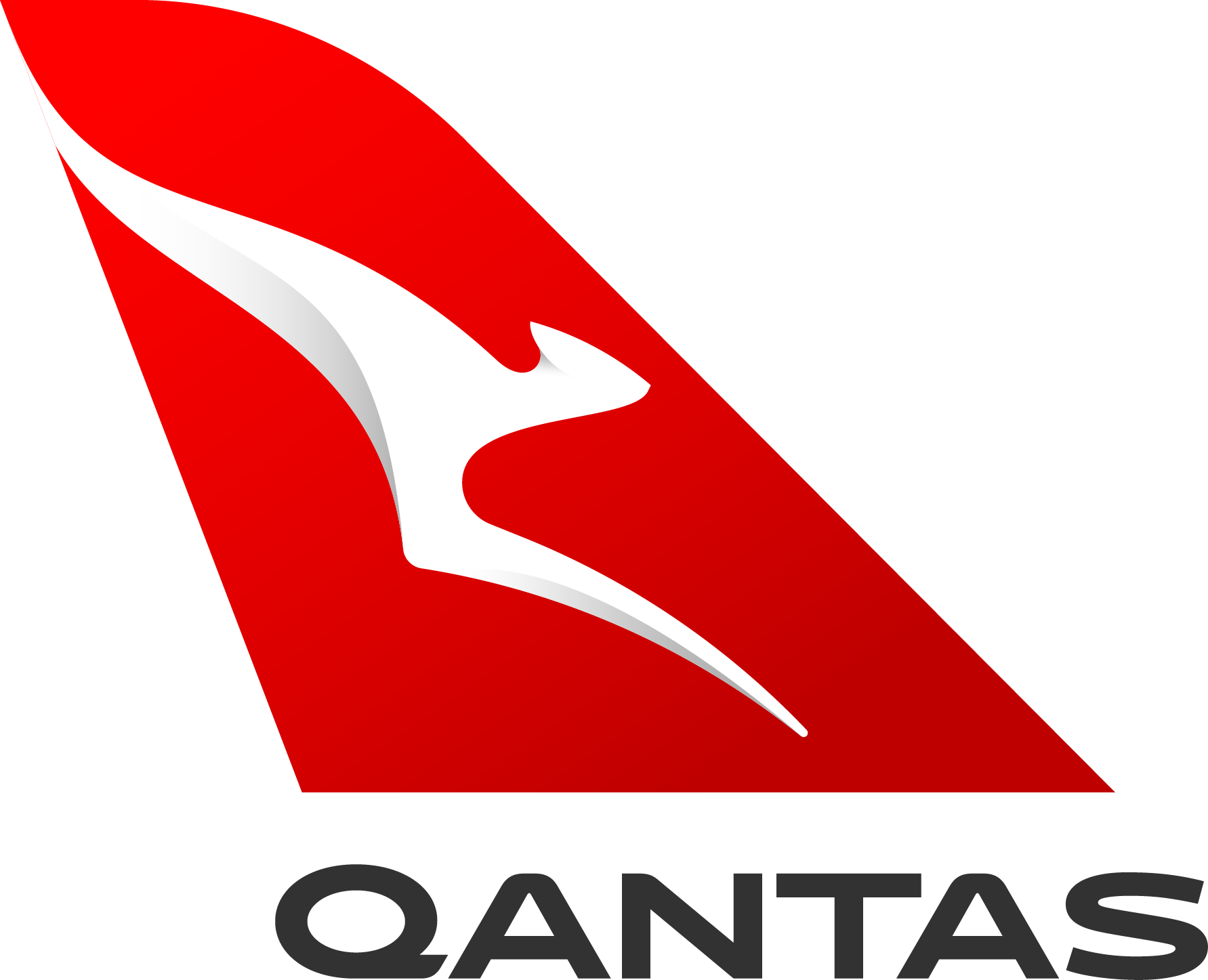
Flight Ticket and Schedule From Kuala Lumpur (KUL) to Tokyo (HND)

Flight Information from Kuala Lumpur (KUL) to Tokyo (HND)
Shortest flight time
8 hr(s), 50 mins

Direct Airline from Kuala Lumpur to Tokyo
Flight Schedule from Kuala Lumpur to Tokyo
Airline | Departure Time | Arrival Time | Origin airport | Destination airport | |
|---|---|---|---|---|---|
 All Nippon Airways | 14:15 | 22:15 | Kuala Lumpur (KUL) | Tokyo (HND) | Book flight |
 AirAsia X | 14:50 | 22:40 | Kuala Lumpur (KUL) | Tokyo (HND) | Book flight |
When is the cheapest flight time from Kuala Lumpur to Tokyo?
Exclusive for new users—register today!
Code:JOMJALAN
About Tokyo
Comprehensive Guide to Kuala Lumpur to Tokyo Flights
Looking for the perfect flight from Kuala Lumpur to Tokyo? This comprehensive guide provides everything you need to know about flying between these two vibrant Asian cities. Whether you're traveling for business or leisure, understanding your flight options, airport information, and travel tips will help ensure a smooth journey from Malaysia's bustling capital to Japan's magnificent metropolis.
Direct Flights
Currently, there are several airlines offering direct flights from Kuala Lumpur to Tokyo. Japan Airlines (JAL), Malaysia Airlines, and AirAsia X operate daily direct flights between Kuala Lumpur International Airport (KUL) and Tokyo's airports. These non-stop flights typically take around 7 hours and 35 minutes, providing a convenient option for travelers seeking the fastest route between these cities.
Layover Flights
For travelers looking for alternative options or potentially more economical choices, several connecting flights are available with layovers in various Asian cities:
Flight 1:
Route: Kuala Lumpur (Malaysia) → Manila (Philippines) → Tokyo (Japan)
Airlines: Philippine Airlines
Total Flight Duration: 10h 25m
Aircraft: Airbus A321
Layovers:
• Ninoy Aquino International Airport (MNL), Manila, Philippines layover for 1h 55m (overnight)Flight 2:
Route: Kuala Lumpur (Malaysia) → Manila (Philippines) → Tokyo (Japan)
Airlines: Philippine Airlines
Total Flight Duration: 11h 0m
Aircraft: Airbus A321
Layovers:
• Ninoy Aquino International Airport (MNL), Manila, Philippines layover for 2h 40m (overnight)Flight 3:
Route: Kuala Lumpur (Malaysia) → Jakarta (Indonesia) → Tokyo (Japan)
Airlines: Malaysia Airlines, Garuda Indonesia
Total Flight Duration: 14h 0m
Aircraft: Boeing 737, Boeing 777
Layovers:
• Soekarno–Hatta International Airport (CGK), Jakarta, Indonesia layover for 4h 20m (overnight)Flight 4:
Route: Kuala Lumpur (Malaysia) → Guangzhou (China) → Tokyo (Japan)
Airlines: China Southern
Total Flight Duration: 19h 10m
Aircraft: Boeing 737MAX 8 Passenger, Boeing 777
Layovers:
• Guangzhou Baiyun International Airport (CAN), Guangzhou, China layover for 10h 15m (overnight)Flight 5:
Route: Kuala Lumpur (Malaysia) → Shanghai (China) → Tokyo (Japan)
Airlines: Shanghai Airlines, China Eastern
Total Flight Duration: 10h 25m
Aircraft: Boeing 737, Airbus A330
Layovers:
• Shanghai Pudong International Airport (PVG), Shanghai, China layover for 2h 0mFlight 6:
Route: Kuala Lumpur (Malaysia) → Guangzhou (China) → Tokyo (Japan)
Airlines: China Southern
Total Flight Duration: 11h 0m
Aircraft: Boeing 737MAX 8 Passenger, Boeing 777
Layovers:
• Guangzhou Baiyun International Airport (CAN), Guangzhou, China layover for 2h 15mFlight 7:
Route: Kuala Lumpur (Malaysia) → Guangzhou (China) → Tokyo (Japan)
Airlines: China Southern
Total Flight Duration: 10h 40m
Aircraft: Boeing 737MAX 8 Passenger, Airbus A321neo
Layovers:
• Guangzhou Baiyun International Airport (CAN), Guangzhou, China layover for 2h 25mFlight 8:
Route: Kuala Lumpur (Malaysia) → Singapore (Singapore) → Tokyo (Japan)
Airlines: Singapore Airlines
Total Flight Duration: 9h 5m
Aircraft: Airbus A350, Boeing 777
Layovers:
• Singapore Changi Airport (SIN), Singapore layover for 1h 0m
Information about schedule and airline subject to change based on airline policy. Please check regularly at Traveloka App.
About Kuala Lumpur International Airport - Kuala Lumpur
Location
Kuala Lumpur International Airport is located approximately 45 kilometers south of Kuala Lumpur city center in Sepang, Selangor. As Malaysia's main international gateway, it serves millions of passengers annually and connects to destinations worldwide. The airport is situated within Malaysia's Multimedia Super Corridor, making it easily accessible from both the capital city and surrounding areas.
Airport Terminal
KLIA consists of two main terminals: the Main Terminal (KLIA1) and KLIA2. The Main Terminal predominantly serves full-service carriers including Malaysia Airlines, Japan Airlines, and Cathay Pacific. KLIA2, which is the world's largest purpose-built terminal for low-cost carriers, primarily serves AirAsia and other budget airlines. Both terminals are equipped with modern facilities and are connected by a free shuttle service.
Transport to Airport
Multiple transportation options are available to reach KLIA:
- KLIA Ekspres: The fastest way to reach the airport, taking just 28 minutes from KL Sentral station to KLIA1.
- KLIA Transit: A commuter train service with stops at Bandar Tasik Selatan, Putrajaya/Cyberjaya, and Salak Tinggi before reaching KLIA.
- Airport Coach: Various bus services operate from KL Sentral and other locations throughout Kuala Lumpur.
- Taxis and Ride-sharing: Pre-booked taxis and ride-sharing services like Grab are readily available.
- Private Cars: The airport is accessible via several highways including the North-South Expressway Central Link (ELITE).
Facilities
KLIA offers extensive facilities to enhance passenger comfort and convenience:
- Dining: Wide variety of local and international restaurants, cafes, and food courts.
- Shopping: Duty-free shops, luxury boutiques, souvenir stores, and convenience outlets.
- Lounges: Premium lounges for first and business class passengers, as well as pay-per-use lounges.
- Connectivity: Free WiFi throughout the terminals, charging stations, and business centers.
- Wellness: Prayer rooms, spa services, rest zones, and medical facilities.
- Special Services: Currency exchange, baggage storage, children's play areas, and assistance for passengers with reduced mobility.
- Hotels: Several on-site and nearby accommodation options for transit passengers or those with early departures.
About Haneda International Airport - Tokyo
Location
Haneda International Airport is located approximately 14 kilometers south of Tokyo city center in Ota, Tokyo. It's the preferred airport for domestic flights and international short-haul routes due to its proximity to downtown Tokyo. Haneda offers significantly shorter transfer times to central Tokyo compared to Narita International Airport, making it increasingly popular for international travelers.
Airport Terminal
Haneda Airport consists of three terminals:
- Terminal 1: Primarily serves domestic flights operated by Japan Airlines and its subsidiaries.
- Terminal 2: Mainly handles domestic flights operated by All Nippon Airways (ANA) and its affiliated airlines.
- International Terminal (Terminal 3): Handles all international flights, including those from Malaysia. The terminal features a unique design inspired by traditional Japanese architecture and offers extensive shopping and dining options.
All terminals are connected by a free shuttle bus service and an automated people mover system.
Transport From Airport
Haneda offers excellent transportation links to Tokyo and beyond:
- Tokyo Monorail: Connects the airport to Hamamatsucho Station in about 15 minutes, where passengers can transfer to the JR Yamanote Line.
- Keikyu Line: Provides direct access to central Tokyo locations like Shinagawa, from where connections to the Yamanote Line and Shinkansen (bullet train) are available.
- Airport Limousine Buses: Direct services to major hotels and stations throughout Tokyo.
- Taxis: Available at designated ranks outside each terminal, though they can be expensive for longer journeys.
- Car Rental: Several companies operate counters at the airport for those wishing to drive in Tokyo.
Facilities
Haneda Airport provides world-class facilities:
- Dining: Extensive Japanese and international dining options, including restaurants showcasing regional Japanese cuisine.
- Shopping: Duty-free shops, high-end boutiques, traditional Japanese craft stores, and convenience outlets.
- Tokyo Pop Town: A themed shopping area featuring Japanese anime and character merchandise.
- Observation Decks: All terminals feature observation decks with views of the runway and Tokyo Bay.
- Lounges: Premium airline lounges and pay-per-use facilities with shower rooms.
- Connectivity: Free high-speed WiFi throughout, business centers, and charging stations.
- Cultural Experiences: Exhibitions of traditional Japanese arts and culture, and occasional performances.
- Wellness: Massage services, shower facilities, relaxation areas, and medical clinics.
- Accommodation: Several hotels are located within or near the airport, including the Haneda Excel Hotel Tokyu connected to Terminal 2.
FAQ Kuala Lumpur to Tokyo Flight
Question: What is the flight duration from Kuala Lumpur to Tokyo?
Answer: Direct flights from Kuala Lumpur to Tokyo typically take around 7 hours and 35 minutes. Connecting flights with layovers can range from 9 to 19 hours depending on the transit point and waiting time.Question: Which airlines offer direct flights from Kuala Lumpur to Tokyo?
Answer: Several airlines operate direct flights on this route, including Japan Airlines (JAL), Malaysia Airlines, and AirAsia X. These carriers offer daily services to either Narita International Airport (NRT) or Haneda Airport (HND).Question: What is the time difference between Kuala Lumpur and Tokyo?
Answer: Tokyo is 1 hour ahead of Kuala Lumpur. When it's 12:00 PM in Kuala Lumpur, it's 1:00 PM in Tokyo.Question: What is the baggage allowance for flights from Kuala Lumpur to Tokyo?
Answer: Baggage allowance varies by airline and fare class. Typically, full-service carriers allow 20-30kg for checked baggage in economy class, while business class passengers may receive 30-40kg. Budget airlines like AirAsia X often require separate baggage purchase. Always check your specific ticket details on Traveloka before traveling.Question: What is the best time to book flights from Kuala Lumpur to Tokyo?
Answer: For the best fares, it's advisable to book 2-3 months in advance. June tends to offer the lowest fares, while peak tourist seasons like cherry blossom (late March to early April) and autumn foliage (November) see higher prices due to increased demand.Question: Do I need a visa to travel from Malaysia to Japan?
Answer: Malaysian citizens can enter Japan for tourism or business purposes for up to 90 days without a visa. However, you must have a passport valid for the duration of your stay, a confirmed return ticket, and sufficient funds. Always check the latest entry requirements before traveling.Question: Which Tokyo airport is better to fly into from Kuala Lumpur?
Answer: Haneda Airport (HND) is generally more convenient for travelers as it's closer to central Tokyo (approximately 14km) compared to Narita International Airport (NRT), which is about 60km from the city center. Transportation from Haneda to downtown Tokyo is faster and less expensive.Question: What is the best way to pay for things in Tokyo?
Answer: While Japan was traditionally a cash-based society, credit cards are now widely accepted in hotels, department stores, and restaurants in Tokyo. However, it's advisable to carry some cash for smaller establishments, markets, and vending machines. ATMs at 7-Eleven convenience stores reliably accept foreign cards.
Other Ways to Travel From Kuala Lumpur to Tokyo
While flying is the only practical way to travel from Kuala Lumpur to Tokyo due to the geographical separation of Malaysia and Japan, here are some theoretical alternative routes for the adventurous traveler:
Sea Route (Cruise or Cargo Ship)
Route: Kuala Lumpur → Port Klang → Various Asian ports → Yokohama → Tokyo
Duration: 10-14 days depending on stops
Note: Passenger services are limited, but occasional repositioning cruises or freighter travel might be possible for the very adventurous.Overland + Sea Route
Route: Kuala Lumpur → Thailand → Laos → China → Ferry from Shanghai to Osaka → Train to Tokyo
Duration: Approximately 2-3 weeks
Note: This would involve multiple border crossings, various transportation modes, and complex logistics.Private Yacht
Route: Marina in Malaysia → Various stops in Philippines/Taiwan → Tokyo Bay
Duration: Several weeks depending on weather and stops
Note: Only viable for experienced sailors with proper equipment and permits.
These alternative routes are impractical for most travelers and are presented merely as theoretical possibilities. Flying remains the only reasonable option for travel between these two cities, with flight times of approximately 7-8 hours for direct services.
Explore Tokyo
Popular Destinations in Tokyo
Tokyo Skytree
Tokyo Skytree is a broadcasting and observation tower that stands at 634 meters, making it the tallest structure in Japan. Visitors can enjoy panoramic views of Tokyo from its two observation decks at 350m and 450m above ground level. The surrounding area features a large shopping complex, an aquarium, and numerous dining options.Shibuya Crossing
Often called the busiest intersection in the world, Shibuya Crossing is an iconic symbol of modern Tokyo. When the traffic lights turn red, pedestrians from all directions flood the intersection in a mesmerizing demonstration of organized chaos. The surrounding area is a major shopping and entertainment district popular with young Tokyoites.Shinjuku Gyoen National Garden
This spacious park combines three distinct styles: Japanese traditional, French formal, and English landscape. It's one of Tokyo's most beautiful green spaces and particularly stunning during cherry blossom season in spring and autumn foliage season. The garden provides a peaceful retreat from the surrounding urban bustle.Meiji Shrine
Dedicated to Emperor Meiji and Empress Shoken, this Shinto shrine is set within a 170-acre forest in the heart of Tokyo. The peaceful grounds feature massive torii gates, gravel paths, and a collection of some 100,000 trees donated from across Japan. It's a popular spot for traditional Japanese weddings on weekends.Senso-ji Temple
Tokyo's oldest and most famous Buddhist temple, founded in 645 AD. The approach to the temple is through the Nakamise Shopping Street, a centuries-old shopping arcade selling traditional crafts, snacks, and souvenirs. The temple's five-story pagoda and massive red lantern at the Kaminarimon Gate are iconic Tokyo landmarks.
Popular Cuisine in Tokyo
Sushi and Sashimi
Tokyo is world-renowned for its fresh, high-quality sushi and sashimi. For an authentic experience, visit the restaurants surrounding the former Tsukiji Fish Market area or its replacement, Toyosu Market. Early morning sushi breakfasts after the tuna auction are particularly popular. Don't miss trying otoro (fatty tuna), uni (sea urchin), and seasonal specialties.Ramen
Tokyo-style ramen typically features a soy sauce-based broth and straight noodles. Each neighborhood has its own famous ramen shops, with areas like Shinjuku's "Ramen Street" in Tokyo Station offering multiple award-winning options under one roof. Popular varieties include tsukemen (dipping ramen), miso ramen, and the rich, pork-based tonkotsu ramen.Tempura
This cooking technique of battering and deep-frying seafood and vegetables was perfected in Tokyo. The best tempura restaurants use the freshest seasonal ingredients and light, crispy batter that doesn't absorb oil. Look for traditional tempura-ya where chefs prepare and serve pieces directly across the counter.Monjayaki and Okonomiyaki
Monjayaki is a Tokyo specialty similar to the more widely known Osaka-style okonomiyaki (savory pancake). In Tsukishima's "Monja Street," dozens of restaurants specialize in this runny, savory dish cooked directly on a hot griddle at your table. Ingredients typically include cabbage, seafood, and various meats mixed with a liquid batter.Wagashi and Matcha
Traditional Japanese sweets (wagashi) paired with bitter matcha green tea offer a refined taste experience. Tokyo's century-old confectioneries craft seasonal wagashi that reflect natural motifs and traditional aesthetics. These delicate sweets, made from ingredients like sweet bean paste, mochi, and seasonal fruits, are works of art in themselves.
Whether you're flying direct or choosing a connecting flight through another Asian hub, traveling from Kuala Lumpur to Tokyo offers an exciting journey between two of Asia's most dynamic cities. With comfortable flight options, excellent airport facilities, and Tokyo's incredible attractions awaiting you upon arrival, your trip promises to be memorable from start to finish. Book your flight with Traveloka today and begin your Japanese adventure!
Flight Information to Tokyo
Flight Duration | 8 hr(s) 50 mins |
Airport in Kuala Lumpur | |
Airport in Tokyo |
Frequently Asked Questions
Popular Airline
For all your unique travel choices, we got you
Popular Routes from Kuala Lumpur International Airport
Popular Routes from Haneda International Airport
Popular Airline to Tokyo
Popular Routes
Popular Destinations
Popular Airlines
Popular Airline & Destination
Popular Airports
Top Domestic Destination
Top International Destination
Top Flight Airport




























































 Facebook
Facebook Instagram
Instagram TikTok
TikTok Youtube
Youtube Twitter
Twitter Telegram
Telegram